Instructions For Form Ftb 3523 - Research Credit - 2016 Page 4
ADVERTISEMENT
Example 2: Partnership AB has two partners each with 50% ownership.
For purposes of line 27, reduce gross receipts for any taxable year by
Partner A is an individual, and Partner B is a corporation. The
returns and allowances made during the taxable year. In the case of a
partnership elects the reduced regular research credit. The amount
business that operates within and outside of California, include only
of regular credit computed by the partnership on line 17a is $2,000.
the gross receipts from the sale of property held primarily for sale
Partnership AB would figure each partner’s credit from the line 17a
to customers in the ordinary course of your trade or business that is
amount as follows:
delivered or shipped to customers in California, regardless of f.o.b.
point or any other condition of the sale. This includes sales to the U.S.
Partner A – $2,000 x 50% (.50) x 87.7% (.877) = $877
government, that are delivered or shipped to customers in California.
Partner B – $2,000 x 50% (.50) x 91.16% (.9116) = $912
Throwback sales and receipts from services, rents, operating leases and
These amounts are the research credit available to Partner A and
interest, royalties and licenses are excluded from the computation.
Partner B for their 2016 taxable year.
Line 39a
Amounts received from S corporations, estates, trusts, partnerships,
See line 17a instructions.
and LLCs, may be limited due to IRC Section 41(g) and the related
regulations.
Line 39b
See line 17b instructions.
Section B – Alternative Incremental Credit
Section C – Available Research Credit
Complete this section ONLY if you are electing the alternative incremental
credit instead of the regular credit. Make the election on a timely filed
Line 40 – Individuals, shareholders, beneficiaries, partners,
original tax return for the taxable year to which the election applies. Once
and members:
made, the election applies to the current taxable year and all later years
unless you receive the FTB’s consent to revoke the election.
If the S corporation, estate, trust, partnership, and LLC elected the
reduced research credit, the amount of research credit passed through
If you have no California gross receipts (under LDG 2012‑03‑01), you
to you on Schedule(s) K‑1 (100S, 541, 565, or 568) should reflect
cannot use the Alternative Incremental Credit; you must use the regular
a research credit amount in which the applicable credit reduction
incremental credit as a start‑up under Section A.
percentage has been applied. Make your election of the credit reduction
Line 18
consistent with that of the pass‑through entity. However, the credit
Corporations (other than S corporations, personal holding companies,
reduction percentage may differ from that of the pass‑through entity.
and service organizations) may be eligible for a “basic research” credit
In some cases, the pass‑through entity may not know what type of entity
if the 2016 taxable year payments in cash made to a qualified university
the shareholder, beneficiary, partner, or member is, in these cases, the
or scientific research organization (under a written contract) exceed a
pass‑through entity will report the pro‑rata or distributive amount of
base period amount (based on your general university giving and certain
research credit on Schedule K‑1 (100S, 541, 565, or 568) without the
other maintenance‑of‑effort levels for the three preceding years). To be
IRC Section 280C(c) reduction. The pass‑through entity will note in the
eligible, conduct the basic research within California.
other information section of the Schedule K‑1 (100S, 541, 565, or 568)
Enter your 2016 taxable year payments on line 18. See IRC Section 41(e)
to reduce the credit by the shareholder’s, beneficiary’s, partner’s, or
and R&TC Section 23609(d) for details. Also see line 1 instructions for
member’s applicable credit reduction percentage as follows:
more information.
• 87.7% (.877) for individuals, estates, and trusts
• 91.16% (.9116) for corporations
Line 19
• 98.5% (.985) for S corporations
Enter the base amount as defined in IRC Section 41(e) and R&TC
The amount of research credit passed through to you on Schedule(s)
Section 23609. If you do business both within and outside of California,
K‑1 (100S, 541, 565, or 568) may be limited due to IRC Section 41(g)
see General Information C, Limitations. The amount on line 19 may not
and the related regulations. Specifically, the amount of credit entered on
be more than the amount on line 18. This amount may be classified as
this line is limited to the amount of tax attributable to your interest in the
2016 taxable year contract research expenses on line 25 (subject to the
proprietorship, S corporation, estate, trust, or partnership generating the
65% or 75% limitation).
credit. Use the formula below to determine the credit limitation. If you
Lines 22 and 23
have pass‑through research credits from more than one business interest,
See General Information B, Description, for information regarding
compute the research credit limitation separately for each business
qualified research expenses.
interest by applying the formula below to each pass‑through credit.
Line 24
Credit Limit =
Taxable income attributable to
See line 7 instructions.
your interest in the sole
x (Net income tax)
proprietorship or pass‑through
Line 25
entity (Schedule K‑1)
Include 65% of any amount paid or incurred for qualified research
Total taxable income for the
performed on your behalf in California. For corporations only, include 65%
year (Form 540, line 19;
of the portion of line 18 basic research payments that does not exceed the
Long Form 540NR, line 19; or
line 19 base period amount.
Form 541, line 20a)
However, use 75% in place of 65% for payments made to a qualified
For purposes of completing the above formula, net income tax is regular
research consortium. See General Information B, Description, for
tax (from Form 540, line 35; Long Form 540NR, line 42; or Form 541,
information regarding qualified research consortium.
line 21) plus alternative minimum tax (from Form 540, line 61;
Line 27
Long Form 540NR, line 71; or Form 541, line 26).
Enter the average annual gross receipts for the four taxable years
preceding the taxable year for which the credit is being determined
(called the credit year). You may be required to annualize gross receipts
for any short taxable year. See IRC Sections 41(c)(1)(B) and 41(f)(4) for
more information.
Page 4 FTB 3523 Instructions 2016
ADVERTISEMENT
0 votes
Related Articles
Related forms
Related Categories
Parent category: Financial
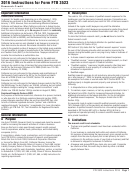 1
1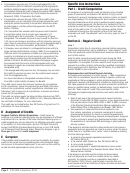 2
2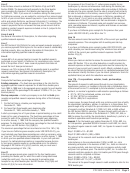 3
3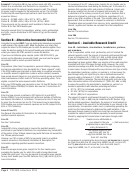 4
4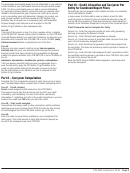 5
5








